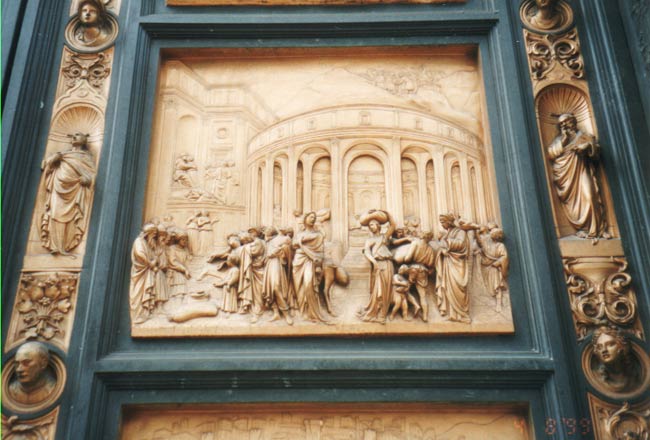
The Duomo
We spent some time walking around the Duomo, and took a peak inside.
Information from "Eyewitness Travel Guides: Italy", page 272: "Rising above the heart of the city, the richly-decorated
Duomo - Santa Maria del Fiore - and its orange-tiled dome have become Florence's most famous symbols. Typical of the
Florentine determination to lead in all things, the cathedral is Europe's fourth largest church, and to this day remains
the city's tallest building. The Neo-Gothic marble facade echoes the style of Giotto's Campanile, but was only
added in 1871-87."

The top of the tower is called the Campanile. Information from "Eyewitness Travel Guides: Italy", page 272: "At 276 feet, the
Campanile is 20 feet shorter than the dome. It is clad in white, green, and pink Tuscan marble. Designed by Giotto in
1334, it was completed in 1359, 22 years after his death."
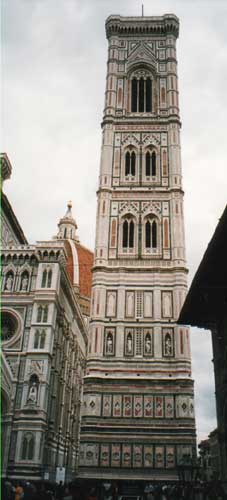
Information from "Eyewitness Travel Guides: Italy", page 273: "Dome by Brunelleschi: Finished in 1463, this dome
was the largest of its time to be built without scaffolding. Bricks were set between
marble ribs in a self-supporting herringbone pattern - a technique Brunelleschi copied from the Pantheon in Rome."
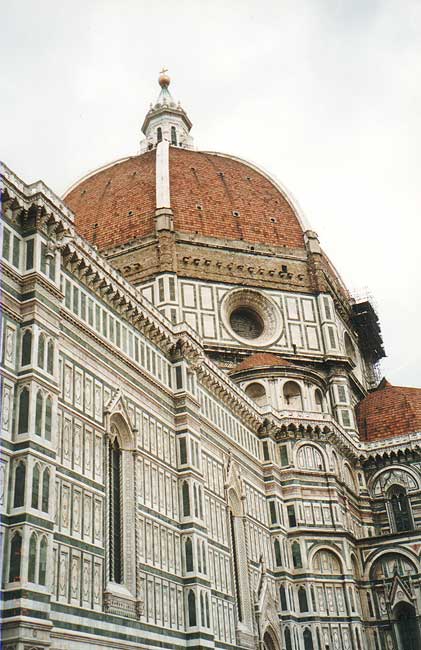
Information from "Eyewitness Travel Guides: Italy", page 273: "Chapels at the East End: The three apses, crowned by smaller
copies of the dome, have five chapels each. "
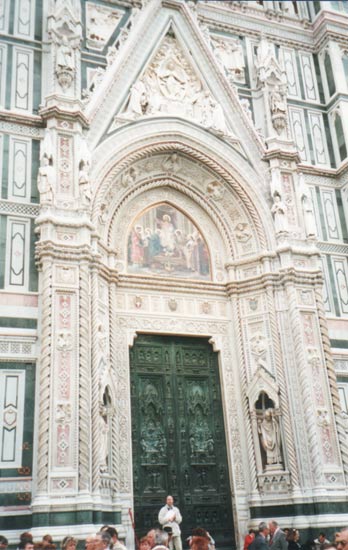
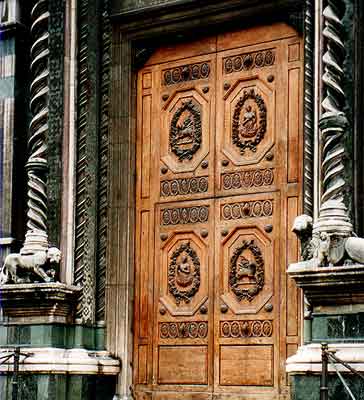
Information from "Eyewitness Travel Guides: Italy", page 273: "The marble sanctuary around the high altar was created
by Baccio Bandinelli in 1555."
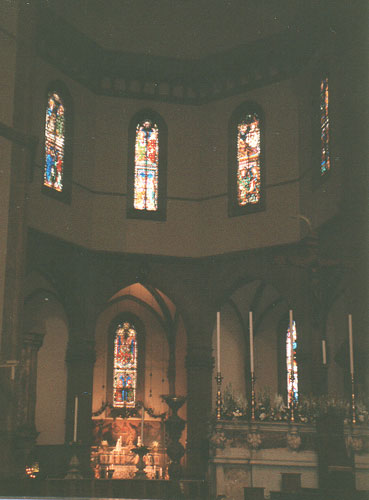
Below is a photo from inside the Duomo Dome. Information from "Eyewitness Travel Guides: Italy", page 273: "Last
Judgment frescoes (1572-1574) by Vasari were completed by Zuccari."
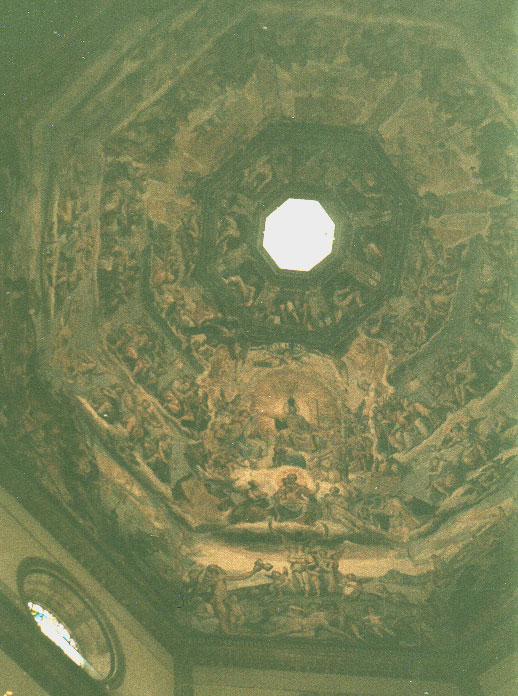
Information from "Eyewitness Travel Guides: Italy", page 272: "The Baptistry, with its celebrated bronze doors, may date back to the 4th century, making it one of Florence's oldest buildings."
Information from http://jcccnet.johnco.cc.ks.us/~jjackson/flor.html: The south doors of the baptistery were completed in 1336 by Andrea Pisano. They tell the story of John the Baptist.
Information from http://www.kfki.hu/~arthp/html/p/pisano/andrea/south_d/:
The partial panel on the bottom right represents "Entombment of the Baptist".
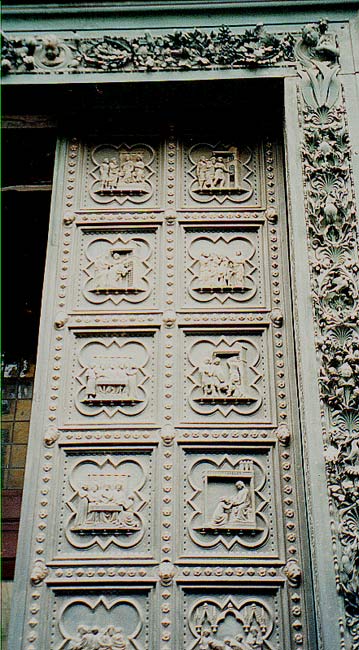
Information from "Eyewitness Travel Guides: Italy", page 274: "The East Doors of the Baptistry: (1424-1452) Lorenzo Ghiberti's famous bronze Baptistry doors were commissioned in 1401 to mark the city's deliverance from the plague. Ghiberti was chosen to make a set of new doors after a competition that involved several leading artists, including Donatello, Jacopo della Quercia, and Brunelleschi. Michelangelo enthusiastically dubbed them the "Gate of Paradise". The original ten relief panels showing scriptural subjects are now exhibited in the Museo dell'Opera del Duomo. Those on the Baptistry are copies."
The panels on the door shown below, from the top, are called:
Cain Murders his Brother, Abel
Abraham and the Sacrifice of Isaac
Joseph Sold into Slavery
The Fall of Jericho
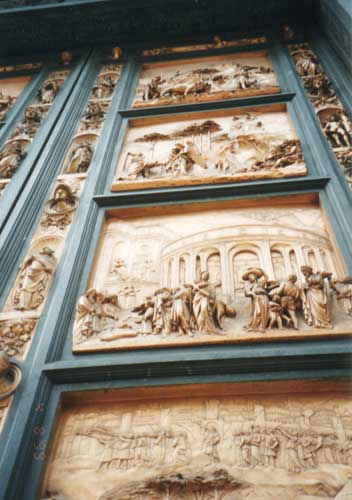
This panel is called "Joseph Sold into Slavery". Information from "Eyewitness Travel Guides: Italy", page 274: "Ghiberti,
a master of perspective, formed the architectural elements in the shallower relief behind the figures to create the illusion of
depth in the scene."
